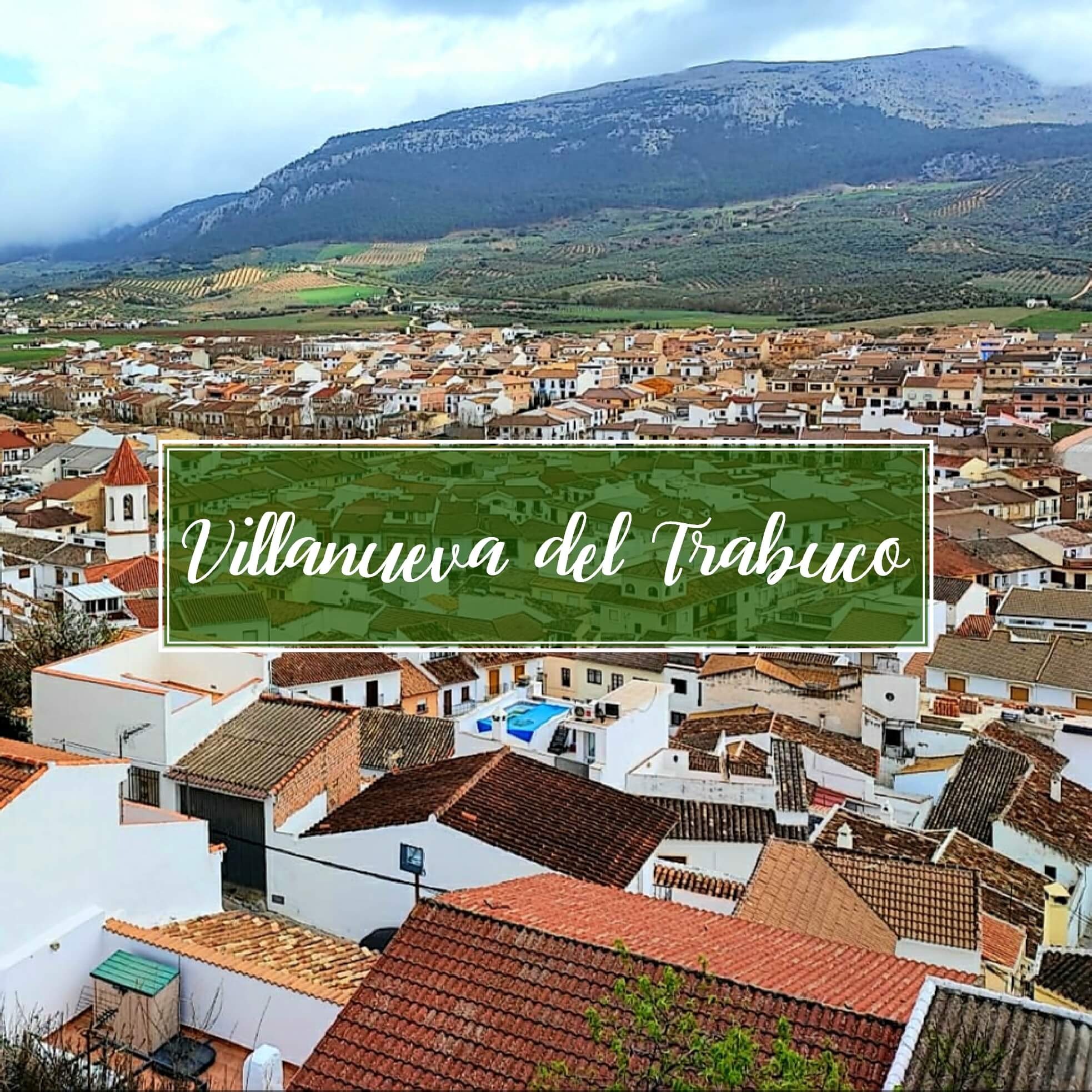Villanueva del Trabuco is a charming municipality located in the Nororma region, in the province of Málaga, Andalusia. This picturesque village, surrounded by mountains and olive groves, offers a privileged natural setting, with the San Jorge mountain range as a backdrop. Its cobblestone streets and whitewashed houses reflect the essence of a typical Andalusian village.
Villanueva del Trabuco is known for its springs and natural fountains, with the Fuente de los Cien Caños standing out as a remarkable site where the Guadalhorce River originates. This area is perfect for hiking and enjoying close contact with nature.
Where is Villanueva del Trabuco located
Villanueva del Trabuco is located 47km from Malaga capital with a population of 5299 inhabitants. The municipal term has a dimension of almost 59km square.
Origin of the name Villanueva del Trabuco
The word “Trabuco” means Blunderbuss that is a type of firearm. A legend tells that a local in the area frequently traveled to Archidona to do his shopping. During his trip his goods were an easy target, tired of multiple assaults decided to buy a large blunderbuss to defend himself. When the residents of Archidona traveled, they said “Here comes the blunderbuss”, this phrase could be the origin of the town’s name.
Denonym of the people of Villanueva del Trabuco
The inhabitants are called “trabuqueño or trabuqueña”.
Monuments and places of interest in Villanueva del Trabuco
- Iglesia Nuestra Señora de los Dolores: It is the oldest and most outstanding building in the village located on Calle Iglesia. The temple was built at the end of the 18th century in the year 1760 on an old hermitage of Santa María Egipciaca that dates from the year 1645 and the devotion changes to the Virgen de los Dolores. The yellow color of the façade stands out, which is divided into two floors separated by a cornice. The second part is made up of a bell tower of two bodies with a clock. The interior is a simple church with an altarpiece that contains in the center the image of the Virgen de los Dolores, and to the left the Sacred Heart and to the right Saint Joseph with the Child.
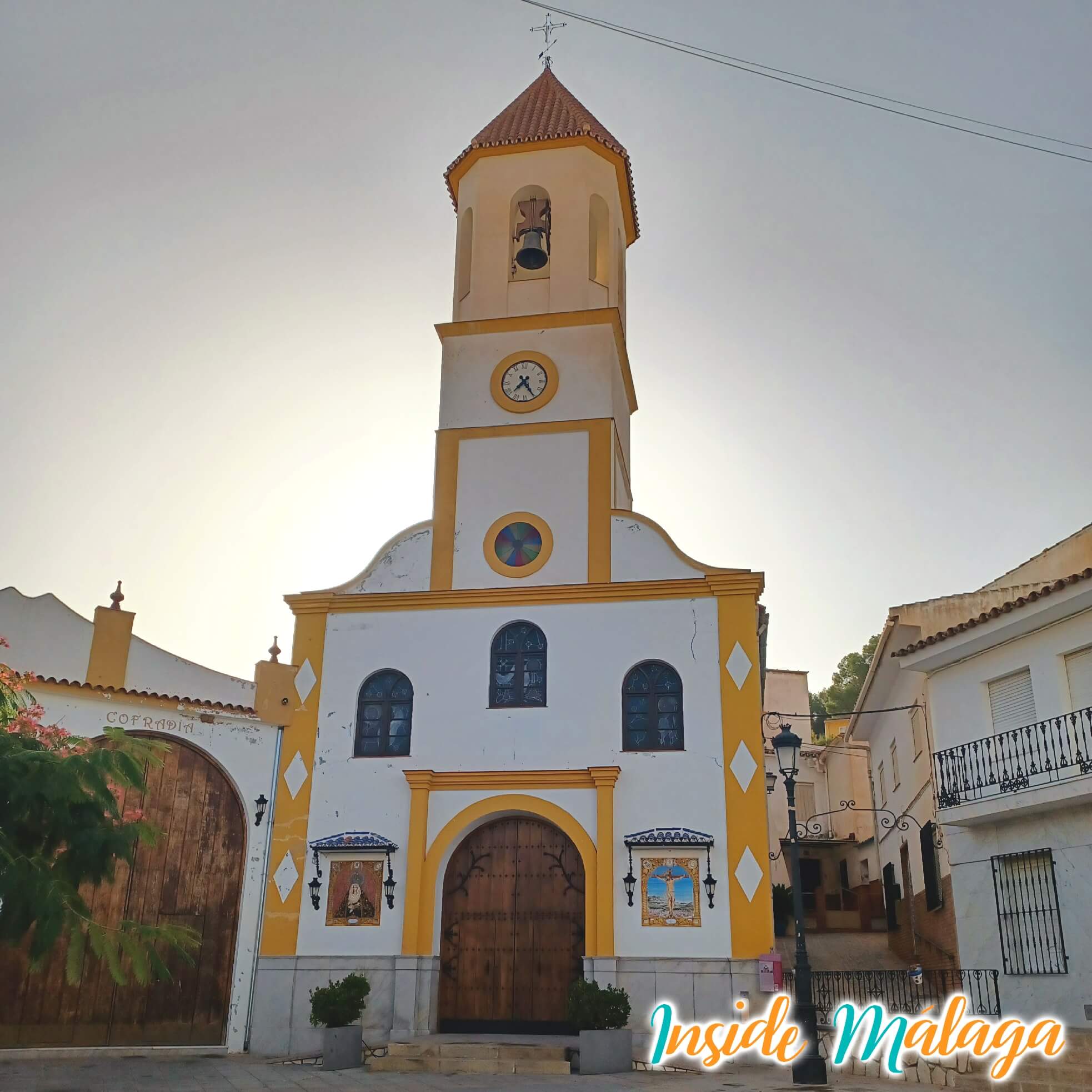
- Fuente de los Cien Caños: Located 5 minutes outside of the village. A natural monument and a wonder of the province. An incredible fountain with 100 spouts, although it actually has 101 spouts. Part of the Sierra de San Jorge, the water from the mountains contributes a large quantity to the Guadalhorce River that emanates in Malaga capital. The noise, freshness and beauty of the fountain make this place a tourist attraction and a meeting place for the residents of the Nororma region.

- Molino Jabonero (Soap Mill): The soap mill is a construction dating from the 20th century. Inside its patio there is an old mill that was used to make oil and flour. The mills worked thanks to the force of the water of the Guadalhorce river that arrives thanks to a structure called “Caz”, a kind of aqueduct. Currently the mill has been restored as a tourist attraction and rural house-hotel. This hotel organizes visits and oil tourism activities.
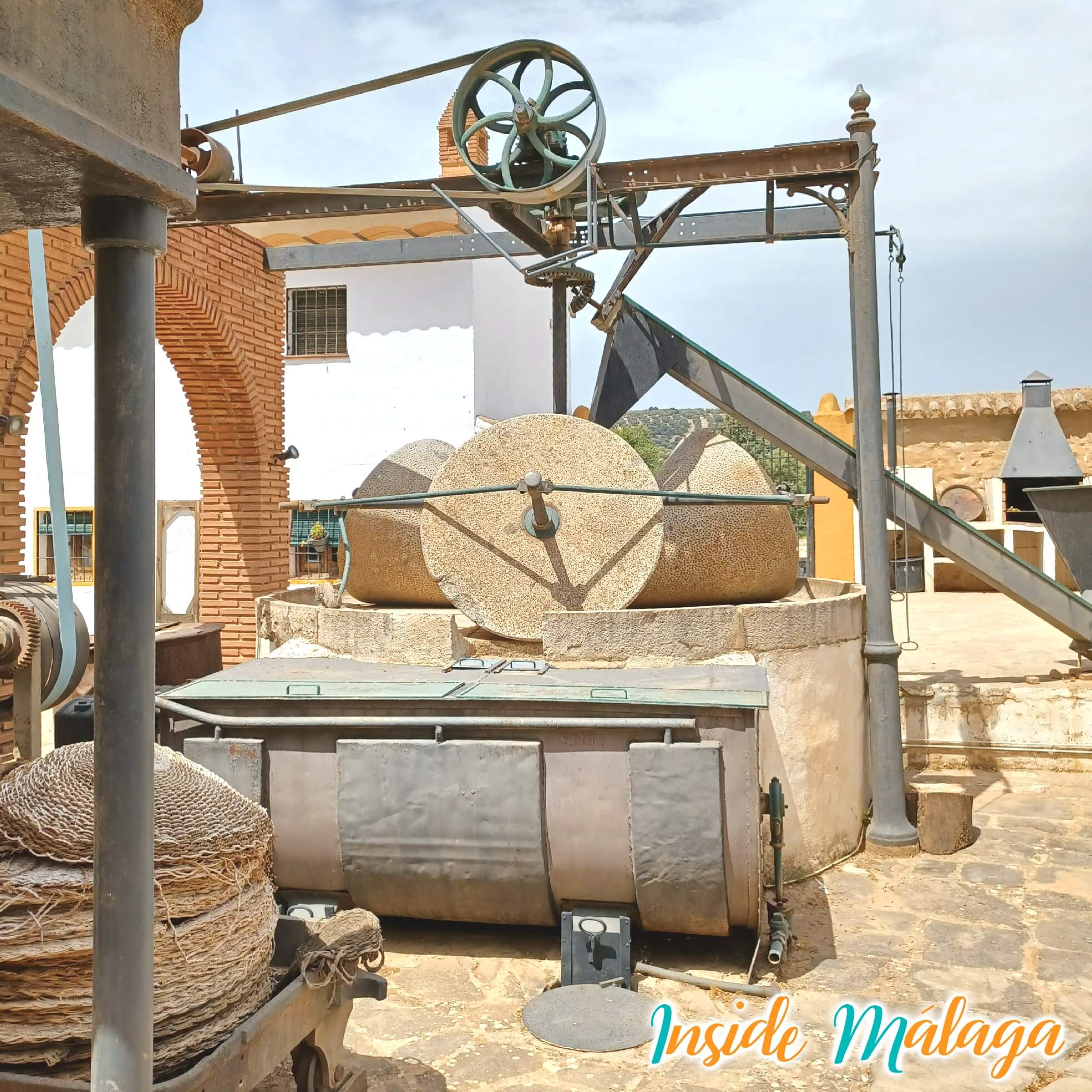
- Plaza de España: One of the main squares in the center of the village. Built in 1865 being of great importance over the years. In the 1950s, the importance of this square increased, as it became an open-air food market with about 8 stalls selling charcoal, fruit, vegetables, meat and fish. During the main festivities of the town, this square always becomes the protagonist both as a meeting point or as a place for activities. During the 1960s, a new market was built in the Plaza del Prado, giving rise to a remodeling of the square with rustic bricks and a marble floor. The center of the square is decorated with a fountain that is a work of art by the painter and sculptor Bernardo Caro.
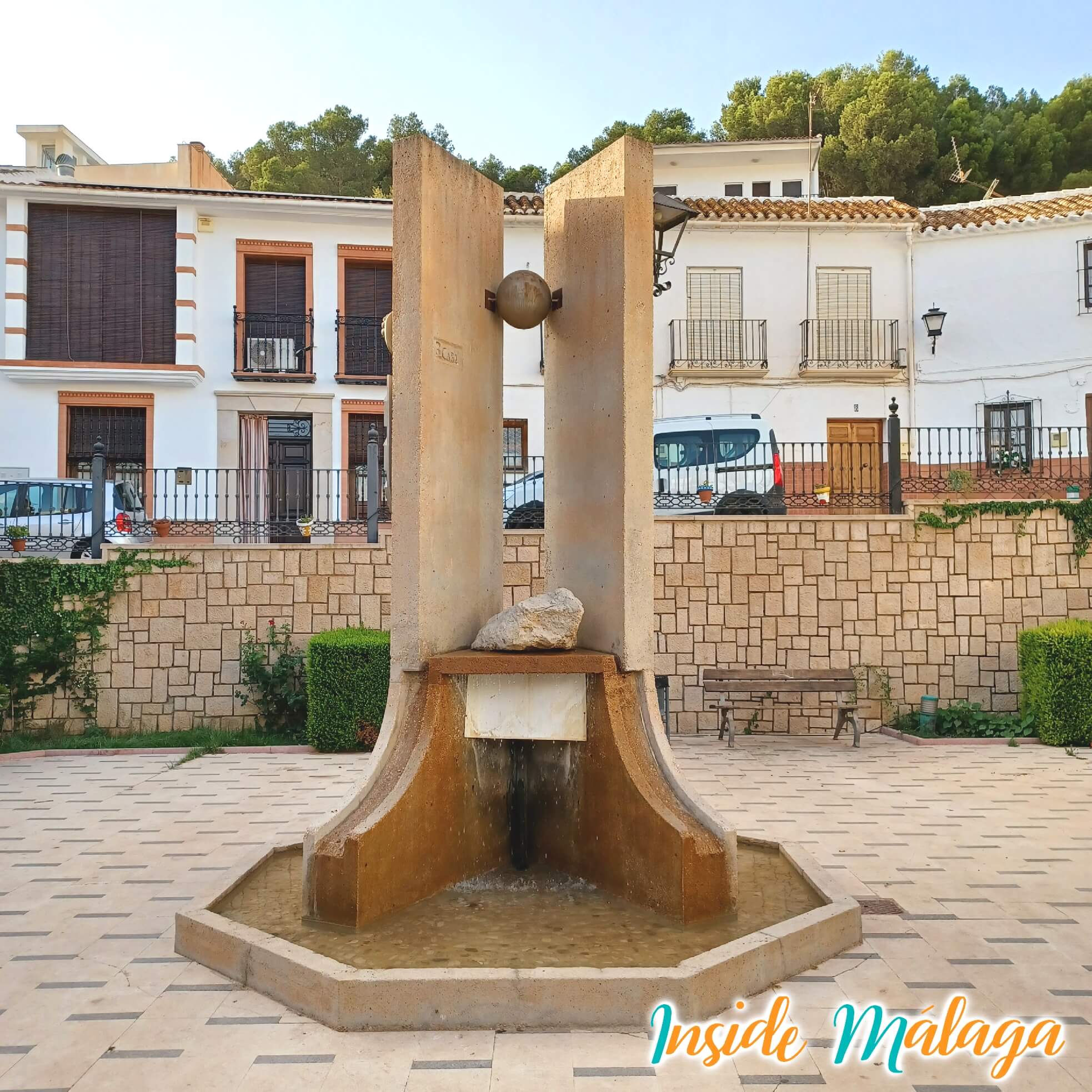
- Virgen del Puente Hermitage: The hermitage is located between the Plaza del Prado and the Guadalhorce river next to the bridge, hence its name (Puente means bridge). A neighbor of the town on a trip to Madrid bought the image of the Virgen de los Dolores and it is installed in the small hermitage. During a major storm the image was removed to avoid being swept away by a flood. During the Spanish Civil War the image was hidden for 28 years to avoid being burned.
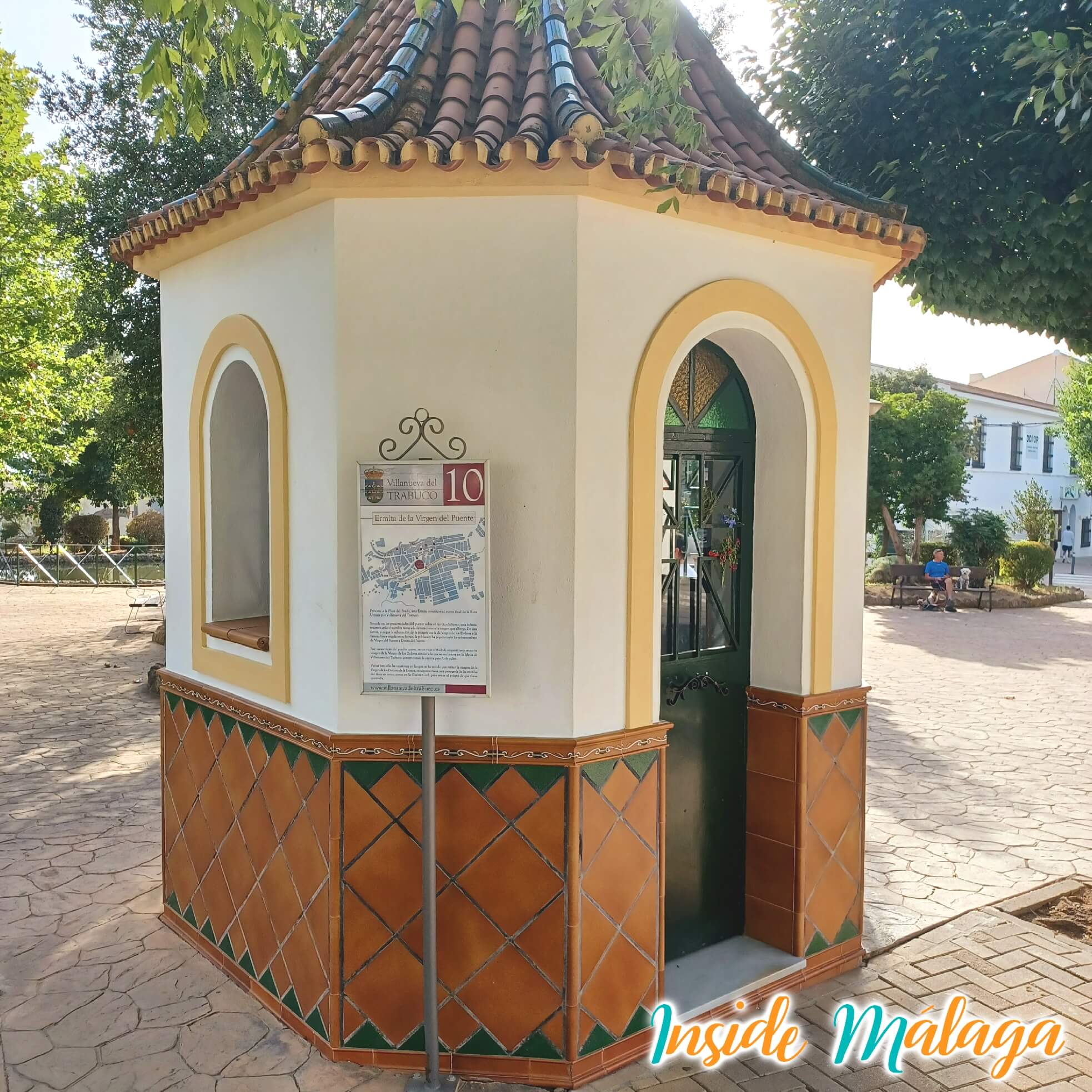
- Mirador de los Villares Villanueva: It is located in the upper part of the village above the Los Villares neighborhood. The ascent offers a series of viewpoints to enjoy the beautiful views over the town and the Sierras San Jorge and Gorda. The Pinar de los Villares offers a pleasant walk under Aleppo pines through a fauna and flora formed by Mediterranean scrub.

For more information about Villanueva del Trabuco Village: visit the City Council page
